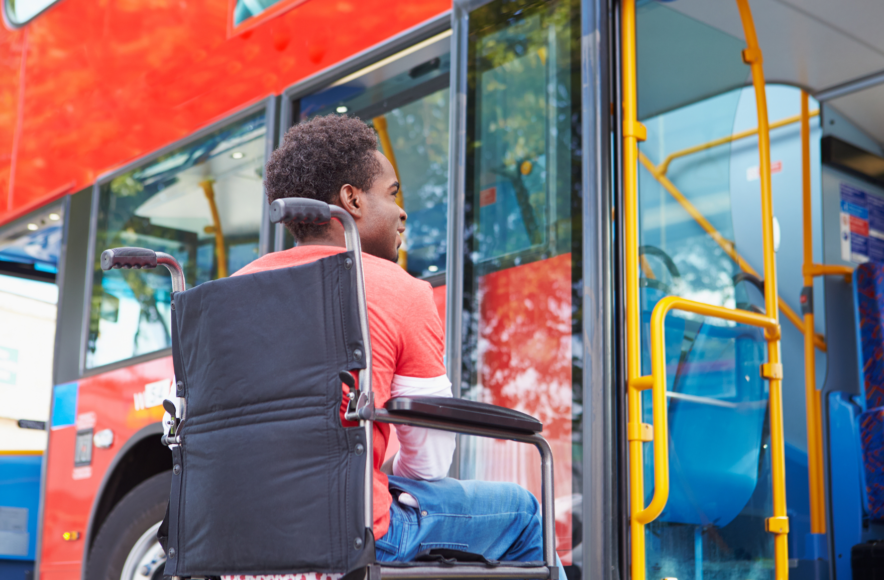Are buses the riskiest way to travel for disabled people?

In the last few months, United Response has spoken to dozens of disabled people who have experienced disability hate crime.
Our disability hate crime (DHC) research team has organised focus groups around the country, and listened to the stories of those most affected by an issue that impacted more than 11,000 people last year. One theme that has come up again and again is a real anxiety around travelling on buses. Many of the disabled people we spoke to saw them as the most likely place to face abuse from fellow travellers.
The stats from the ground-breaking transport survey we ran last year concur. Buses were by far the most likely location for DHC incidents to occur, with 59.1% of the reports we received happening on buses. Trains were a distant second, at only 27.4%. This is a troubling statistic. But how does it compare with overall rates of travel on these methods of transport?
In the year up to March 2024, passengers made a staggering 3.6 billion journeys by bus in England, the area our survey covered. In the same year, 1.3 billion train journeys were made. For every train journey, 2.7 journeys were made by bus. And for each report of DHC on trains, we received 2.2 for buses. With that in mind, the vast gulf between incidences of DHC on buses and trains suddenly makes more sense.
Making buses safer
A number of disabled victims have told us that buses just feel more dangerous, which is something harder to quantify with stats. There are lots of factors to consider. For example, although many more journeys are made by bus than by rail, train journeys tend to be longer than bus journeys, and stops more spaced out. Attendants at our focus groups have suggested that since perpetrators on buses can quickly jump off at the next stop, it might be harder to catch and convict them. Other factors impacting safety include the fact that many trains are regularly crewed by more than one member of staff, whereas bus drivers are unable to leave their cabins and intervene in a DHC incident while driving. In recent years, several train operating companies have considered withdrawing guards from services. Passenger safety has already been a consideration in that debate, but an increased risk of DHC on services without guards must also be a factor in deciding whether to remove them entirely.
It’s clear that bus safety and accessibility must be improved. We’ve heard from disabled people who have been shouted at and pushed for ‘being in the way’, or have had to argue with other passengers about their right to use accessible seats, or have been unable to use wheelchair spaces because luggage was being stored there. Buses are a vital lifeline for disabled people, since many can’t drive. Without them, many more disabled people would be trapped at home. If the government and transport providers don’t take serious steps to reduce the rates of DHC on buses, then the 71% of disabled respondents who told us they were less likely to use services after experiencing DHC will never feel safe to travel again.
United Response is currently reaching out to MPs from across the political spectrum to ask them to take action on disability hate crime. If you feel you can help bring this issue to the attention of your MP, please get in touch by emailing policy@unitedresponse.org.uk.
Click here to read the previous entry in the Experts on Disability Hate Crime blog, which reviews how little DHC was discussed in the House of Commons last year. Further discussion of this issue, including updates on the DHC research project, will feature in the coming months. Our full set of survey data will be released as part of our final report in April.
Image credits © iStock.
- Dr Freddie Jobbins is a Disability Hate Crime Project Researcher for United Response